

OJO: We put the portable Switch projector to the test
What’s great about the Nintendo Switch is that you can take it everywhere. But what if you also want to have your giant screen with you at all times? That’s where the OJO comes in. OJO is a portable docking station with built-in projector.
Nintendo’s latest console is a true quick-change artist. It changes from a home console into a handheld and from a handheld into a device for spontaneous multiplayer games just by putting down the kickstand. Although, I must say that the kickstand solution offers limited fun; the 6.2” screen isn’t suitable for extended game sessions in teams of two – let alone four – players. Nintendo has now come up with a solution for this: the OJO. This device, funded via Indigogo, is an alternative Switch docking station. It’s equipped with a built-in projector, loudspeakers and a 20’400 mAh battery.
Our Category Sourcing Manager Roy Sonderegger supported YesOJO Studio’s Indigogo campaign and lent me his device to give it a try. Our aim was to decide if the OJO is worth adding to digitec’s product range. I managed to find a few volunteers to play «Mario Kart 8» with me – it wasn’t easy, I admit.
A technical compromise
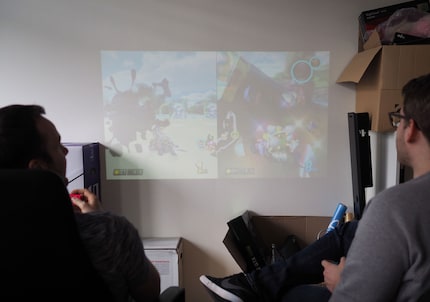
The OJO is not as high, but a little wider than the official Nintendo docking station. Understandably; the small lens and the battery have to be stored somewhere. The OJO has the following connections:
- 2x USB 3.0 type A
- HDMI-In
- 3.5 mm headphone jack
- USB-C power connector
There’s no HDMI-Out to connect the Switch to a TV. This would have been a nice addition – although, on second thought, you probably only take the OJO to places where there’s no TV. If you’re going to hang around in a hotel room, you might as well bring the regular dock.
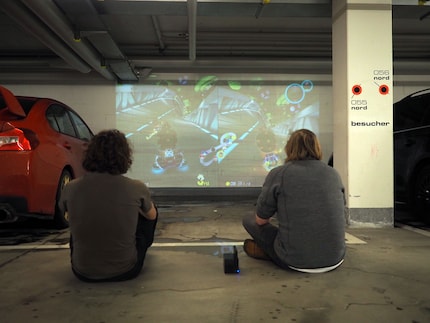
But that’s not what the OJO is meant for. This portable projector works almost everywhere – preferably in dark places that have white walls. We tried it in the office, a meeting room, the elevator and the underground car park.
The resolution of the lens is only 854x480 pixels. This is significantly less than the display of the Switch (1280x720 pixels) – the official dock performs in Full HD. Although the OJO is far from that, the picture is easy to read and we could play «Mario Kart 8» on it without any problems. The low light intensity was more irritating: At only 200 lumens, the picture looked faded, even if we lowered the blinds. On top of that, the colours looked slightly distorted.
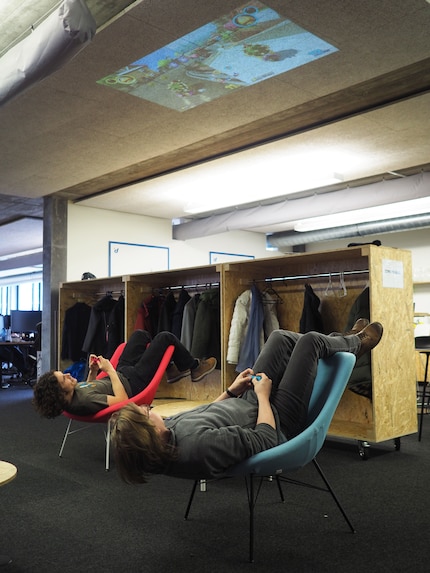
If you have no other choice, a slightly dimmed room will also do. But don’t expect too much if you’re gaming in a bright room.
The OJO projects a 30-120” display. We tested the 120” display on the wall of our underground car park. Manual keystone correction isn’t possible, but you won’t miss this function, as it’s easy to adjust the image by hand. There are two buttons to correct sharpness and a fold-out stand to adjust the viewing angle.
The HDMI-In allows you to connect other devices such as a laptop. And although this isn’t the ideal setting to enjoy 4K Blu-ray, you’re probably not going to get an OJO to play «Planet Earth 2» anyway. What’s slightly confusing is that Nintendo state that the HDMI connection supports up to 4K resolution – this is misleading and nothing but marketing, in my opinion. After all, what good is it if I can connect a 4K source if no more than 480p is supported?
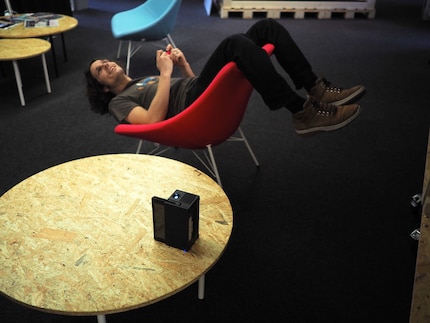
According to the manufacturer, the battery lasts for around four hours. You can even recharge your phone with it. The OJO includes loudspeakers with 5 watts, which is more than enough if you’re not planning to take over a party. You’ll be able to hear the fan when you’re right next to it, but this won’t get on your nerves once you start playing a game with the sound on.
My verdict: Nice to have, but pricey
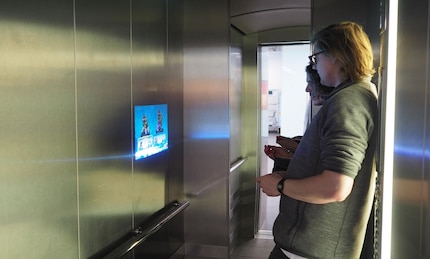
If you regularly want to play when you’re travelling or in places where there’s no TV or projector, the OJO could be exactly what you need. You could get a regular portable mini projector with the same features for less money, but it won’t allow you to connect your Switch. If portability is really important to you and you don’t mind rather low resolution and brightness, go for it. Being able to pick up your console, take it with you and turn almost any place into a gaming playground is a good feeling for sure.

As a child, I wasn't allowed to have any consoles. It was only with the arrival of the family's 486 PC that the magical world of gaming opened up to me. Today, I'm overcompensating accordingly. Only a lack of time and money prevents me from trying out every game there is and decorating my shelf with rare retro consoles.